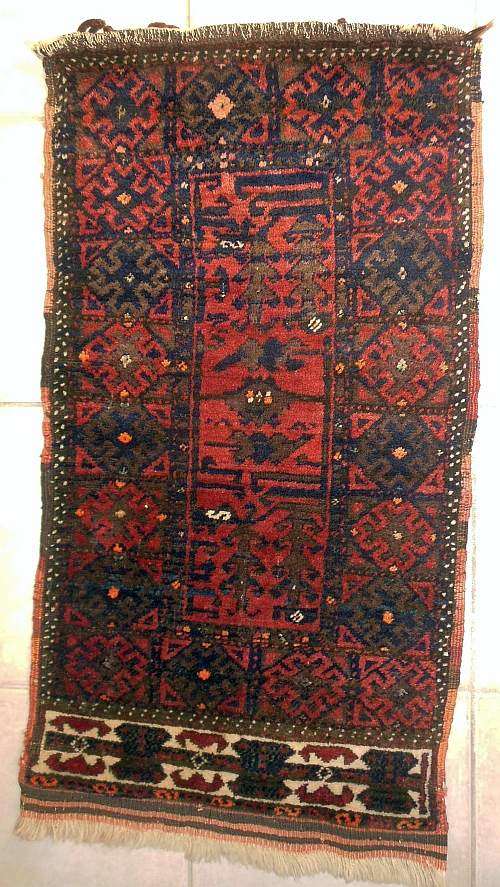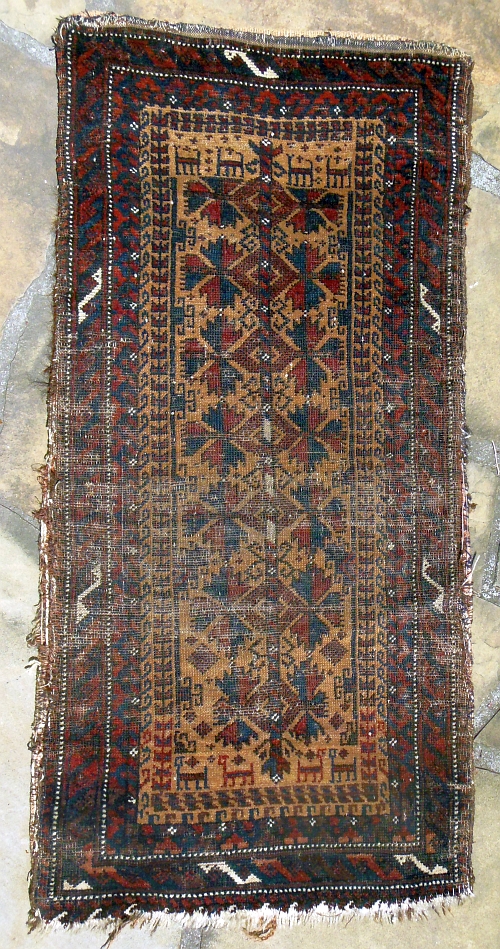At the same net auction in Germany where I bought the Tekke "Germetsch" that turned out to probably be a Tekke Torba instead, I also purchased a small Baluch Balisht. Here is the description by the auction house:
"80 cm x 42 cm... Baluch Balish. Khorssan. Antique. Hand knotted. Wool and camel hair on wool. Early piece. Natural colors. Probably over 100 years old. Tribal carpet of the Turkmen."
Do you think this is correct? Is its somewhat strange shape an example of "deliberate wonktitude"?


"80 cm x 42 cm... Baluch Balish. Khorssan. Antique. Hand knotted. Wool and camel hair on wool. Early piece. Natural colors. Probably over 100 years old. Tribal carpet of the Turkmen."
Do you think this is correct? Is its somewhat strange shape an example of "deliberate wonktitude"?











Comment